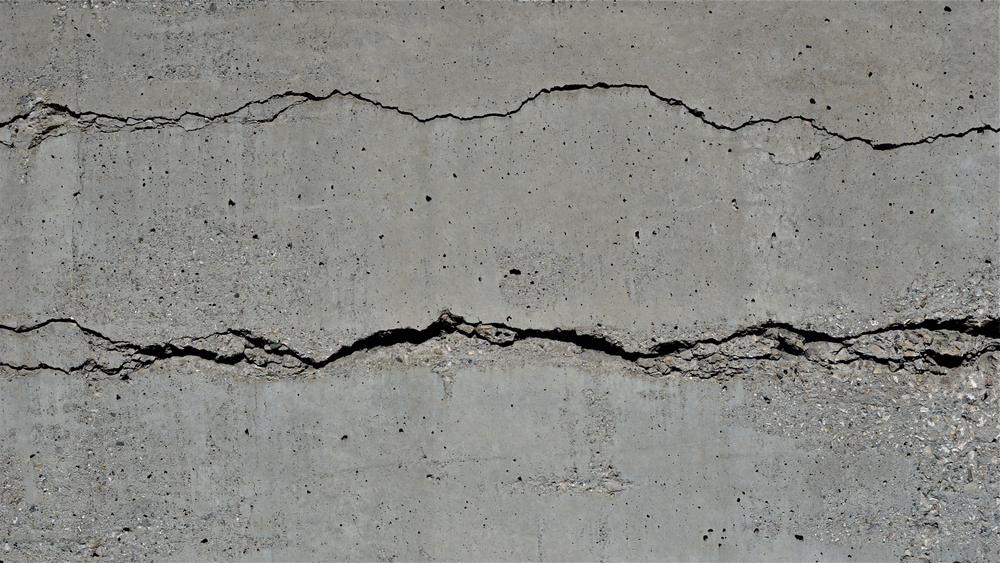That little crack in the wall probably has you worried. You might wonder if it’s just the house settling or something more serious. Understanding the most common foundation shifting causes can give you some peace of mind and help you protect your home.
More importantly, it helps you know what to look for and when to act. Your home in Goldsboro, NC, or a surrounding area in our great state is a major investment, and its stability starts from the ground up. Let’s look at the foundation shifting causes that could be putting it at risk.
What’s Happening Under Your House?
It’s easy to think the ground your home sits on is solid and unchanging. The truth is, the soil underneath is subject to constant soil movement. This soil, causing instability, can swell, shrink, and shift with the seasons due to changes in moisture levels.
This foundation movement is normal, to a point, but certain conditions can make the soil shift too much. Sometimes, a slow, downward movement called soil creep occurs on slopes, gradually stressing the foundation. When the load of your home is not evenly distributed across the soil, problems begin to surface inside your home.
The Main Foundation Shifting Causes To Know
So what makes a foundation move? It usually comes down to a few key culprits related to soil, water, and even the home’s initial construction. Knowing these can help you spot foundation issues early before they become severe structural issues.
Water and Your Soil: A Tough Relationship
The number one reason for a shifting foundation is water, or more specifically, changes in soil moisture. Many homes are built on expansive soil, which acts like a sponge. This soil type is common in many service areas and is highly reactive to water.
During periods of heavy rainfall, this expansive soil swells with water through soil expansion, pushing against your foundation. Then, during a dry spell, the soil dries out and pulls away, a process known as soil shrinkage. This cycle creates immense pressure, which can cause differential settlement and lead to significant foundation damage over time.
When settlement occurs unevenly, it’s called differential settlement, which is far more dangerous than uniform settlement. Uniform settlement happens when the entire house shifts at roughly the same rate, while differential settlement creates stress points. This can make your floors uneven and compromise the home’s structural integrity.
| Feature | Uniform Settlement | Differential Settlement |
|---|---|---|
| Definition | The entire foundation settles at the same rate. | Different parts of the foundation settle at different rates. |
| Cause | Often caused by poor soil compaction across the entire site before initial construction. | Usually caused by varying moisture levels, expansive soil, or extensive root systems on one side. |
| Signs | Less obvious, you might see minor cracks around doors or windows. | Obvious signs include large diagonal cracks, uneven floors, and doors that don’t close properly. |
| Severity | Generally less damaging to the home’s structural integrity. | Can cause significant structural damage and requires immediate professional attention. |
The Ghost of Construction Past
Sometimes, the problem starts before you even move in, stemming from the original construction practices. If the ground wasn’t prepared with proper soil compaction before the foundation was poured, the loose, uncompacted soil can settle unevenly later. This is a classic example of poor construction leading to future foundation movement.
Poor construction might also involve using low-quality concrete or not adding enough steel reinforcement. This creates a weak foundation that is much more likely to crack under pressure. Everything goes back to giving your home a strong base during the initial construction phase.
When Trees Get Too Thirsty
Those beautiful, mature trees in your yard could be trouble for your shifting foundation. Big trees have extensive root systems that are incredibly thirsty. They’ll pull a lot of moisture from the soil, especially during dry weather, which can affect soil moisture dramatically.
If a large tree is too close to your house, its extensive root network can dry out the soil unevenly beneath your foundation. This causes one part of the foundation to sink while the rest stays put. The result is often differential settlement, leading to cracks and structural stress.
Other Potential Causes
Beyond soil, construction, and trees, other factors can lead to foundation shifting. In areas prone to seismic activity, even small tremors can cause soil to shift and settle. Poor drainage systems that fail to direct water away from the house can also lead to soil erosion, washing away the dirt that supports the foundation.
Plumbing leaks from pipes under the slab can also create a constant source of moisture, softening the soil and causing instability. All these issues disrupt the delicate balance needed for a stable foundation. Over time, these problems can cause serious structural damage.
Telltale Signs Your Foundation Is on the Move
How can you tell if you have a house shifting problem? Your house will give you clear warning signs of foundation movement. You just have to know what to look for.
- Cracks in walls or floors. While minor cracks can be normal, large, zigzagging cracks in your drywall or brick exterior are a major red flag. Horizontal cracks in your foundation wall or crawl space are especially serious.
- Doors and windows that stick. Is there a door you have to shove to open, or are windows difficult to shut? When a foundation moves, it twists the frames, causing them to jam and not close properly.
- Gaps around window frames or doors. Look for gaps between your window frames and the brick or siding outside. These are other signs that the house is shifting and pulling things apart, which can also lead to water leaks and drafts.
- Uneven or sloping floors. Do you feel like you’re walking downhill in your own hallway? A noticeably sloping floor is a classic sign of settlement. You might even see your floor pulling away from the wall, creating noticeable gaps.
How Can You Prevent These Problems?
A little prevention goes a long way in home maintenance. Taking some simple steps can help protect your foundation from soil movement. This can save you a lot of money and stress down the road.
Maintain Consistent Soil Moisture
You want to keep the moisture level in the soil around your home as consistent as possible to prevent the extreme swelling and shrinking cycle of expansive soil. In dry months, use a soaker hose system to slowly water the soil around your foundation’s perimeter. This helps prevent the soil from shrinking away and causing settlement.
Improve Your Drainage
Make sure you have proper drainage to prevent water from pooling against your house every time it rains. Keep your gutters clean and extend your downspouts so they carry water several feet away from the foundation. The ground should always slope away from your house, not towards it, to prevent soil erosion.
Landscape With Care
Think about your foundation when you plant trees and shrubs. As a rule, keep large trees with extensive root systems at least 20 feet away from your home. This prevents their powerful roots from interfering with the soil moisture beneath your foundation.
When Should You Call In the Experts?
You can manage drainage and be careful with landscaping, but some jobs are too big to handle on your own. Trying to repair foundation damage yourself is a bad idea that can lead to more expensive structural issues. It’s best to seek a professional foundation repair company for an assessment.
If you see major warning signs such as big cracks or uneven floors, it’s time to get a professional opinion from a foundation repair company. Many offer a free inspection to assess the situation. They can tell you exactly what’s wrong and what repair methods are needed to fix it.
A professional foundation team has the right tools and knowledge to stabilize your home with lasting foundation repairs. They might use methods such as underpinning, which involves installing steel piers deep into the ground for permanent foundation support. Addressing foundation problems correctly is vital for your home’s safety.
Our Conclusion
Your home’s foundation is its most important feature, and protecting its structural integrity is a key responsibility for any homeowner. Paying attention to the early signs of trouble and understanding the main causes of foundation shifting is a vital part of that. The causes range from soil moisture changes and poor drainage to bad construction practices and even thirsty tree roots.
By managing water around your home, checking for warning signs, and knowing when to ask for help from a repair company, you can protect your biggest investment. Addressing the root of the foundation shifting promptly will give you a safe, stable home for years to come. Don’t wait for minor cracks to become major problems.


